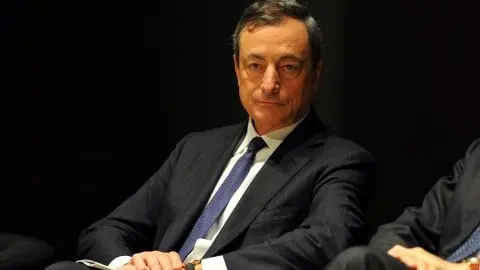EUR & ECB: No help provided and none to be expected
The cautious and dovish ECB bias today underlines the lack of domestic reasons for a meaningful EUR upside. We expect EUR/USD to rise persistently but only in response to structural USD weakness and for this to happen, we still need to wait a few more months
As expected, President Draghi's dovish comments during the ECB press conference today were largely in response to the recent slowdown in the Eurozone data. While not committing to a new set of liquidity operations (such as TLTROs), we expect a more direct hint at these measures in the upcoming March meeting (when the “relevant committees” might be tasked).
In our view, the lack of commitment to TLTROs was the main reason why EUR/USD rebounded from the strong horizontal support level of 1.1310 (though it is still lower on the day).
Lack of domestic drivers for a stronger euro
With the rising likelihood of new TLTROs being delivered by the end of 2Q19 and the falling probability of an ECB deposit rate hike in 4Q19 (given slower than expected growth and CPI remaining below target), this suggests the euro is unlikely to strengthen for good domestic reasons. This is in stark contrast to 2017 when expectations of policy normalisation by ECB led to a meaningful EUR rally. This is currently not the case as the second step of the ECB policy normalisation (meaningful rate hikes) is simply not on the table as growth and inflation dynamics have been fading.
EUR/USD to rise only once the dollar embarks on a structural downward trend
As we've written before in our 2019 FX Outlook: Peak Dollar, we see EUR/USD embarking on a more pronounced and persistent upwards trend only when the dollar peaks. Given our view, the Fed is not done yet with the tightening cycle (our economists look for two more Fed funds rate hikes this year, after the initial pause in coming months) this suggests a modest downside to EUR/USD in the coming months. We target EUR/USD 1.12 in three-months before a recovery to EUR/USD 1.20 by year-end as, by then, we expect the dollar to peak and embark on a structural downtrend.
Implications for EM FX: The drivers behind EUR/USD matter
Our take on the drivers behind the expected EUR/USD upside later this year (weak USD, rather than strong EUR) also means that even with higher EUR/USD in 2H19, central and eastern Europe FX is unlikely to be a meaningful outperformer in the wider emerging markets FX space as was the case in 2017 (remember when the Czech koruna and Polish zloty were the two best performing EM currencies).
This is because if higher EUR/USD is caused by a weaker USD (and not a strong EUR), this also benefits other EM FX regions and not exclusively CEE FX (which back in 2017 was the chief beneficiary of the ECB induced EUR rally vs its EM peers). The CEE FX segment should do well in USD terms later this year, but unlikely to be a significant outperformer in the more extensive EM FX space.
This publication has been prepared by ING solely for information purposes irrespective of a particular user's means, financial situation or investment objectives. The information does not constitute investment recommendation, and nor is it investment, legal or tax advice or an offer or solicitation to purchase or sell any financial instrument. Read more
Download
Download article
24 January 2019
In case you missed it: The new reality This bundle contains 8 Articles